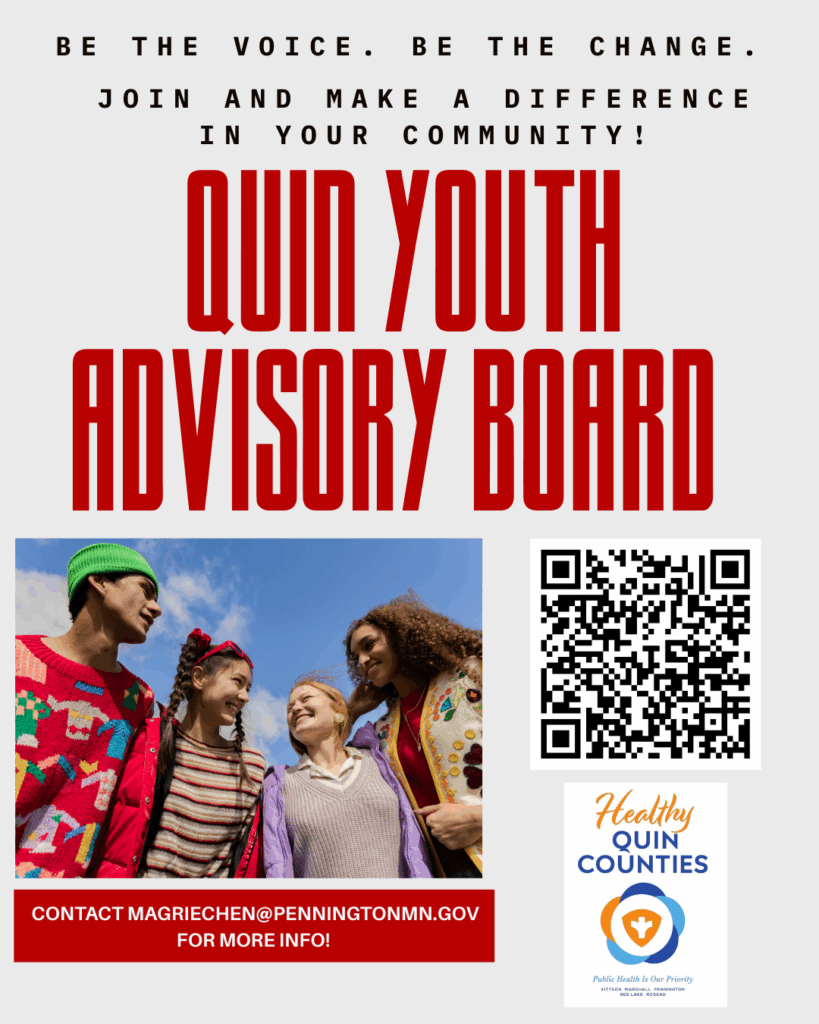
We are committed to protecting our youth and communities from substance use using evidence-based interventions, programs, and strategies.
Cannabis Substance Use Prevention (CSUP)
CSUP is a prevention initiative started by the State of Minnesota to reduce the negative impacts of the legalization of cannabis in 2023. For our youth, cannabis and other substances can hurt the developing brain. Substances, such as cannabis, can affect decision-making, cognition, and even increase the risk of a substance use disorder (addiction) later in life.
Source: Centers for Disease Control and Prevention. (2024, November 29). Substance Use Among Youth. Reducing Health Risks among Youth. https://www.cdc.gov/youth-behavior/risk-behaviors/substance-use-among-youth.html

Get the Facts
Most youth report not using substances, including alcohol, cannabis, vapes, prescription drug use, and illicit substances. Educate yourself on the most widely used substances to make informed choices on your use.
Alcohol
Alcohol is a legal depressant for adults over 21, but it poses serious health risks. It’s processed by the liver, and when consumed in excess, it can enter the bloodstream and impair the brain—affecting movement, memory, and judgment. Binge drinking can lead to alcohol poisoning, and chronic use may damage the liver, worsen mental health, and increase the risk of strokes and alcohol use disorder (alcohol addiction). No amount of alcohol is considered safe, especially for youth, whose brain development can be harmed. Delaying use lowers the chance of substance use disorders later in life. Responsible adult consumption or abstinence reduces health risks. In 2022, about 20% of Pennington and Red Lake 9th and 11th graders reported alcohol use.
Sources:
-National Institute on Alcohol Abuse and Alcoholism. (2022, May). Alcohol Metabolism | National Institute on Alcohol Abuse and Alcoholism (NIAAA). Www.niaaa.nih.gov. https://www.niaaa.nih.gov/publications/alcohol-metabolism
-Centers for Disease Control and Prevention. (2025). Alcohol Use and Your Health. Alcohol Use. https://www.cdc.gov/alcohol/about-alcohol-use/index.html
–Substance Use Data and Resources By County – SUMN.org. (2022). Substance Use in Minnesota. https://www.sumn.org/data/location/county/pennington
Cannabis
Cannabis, now legal for adults over 21, affects brain receptors linked to mood, pain, and appetite—mainly through THC, which causes the “high,” and CBD, which may offer health benefits. It can be smoked, vaped, or eaten, with short-term effects including anxiety, memory issues, and impaired motor function; long-term use may lead to heart problems, schizophrenia, and lung damage. Medical cannabis is regulated and may help with conditions like seizures and chronic pain, but it hasn’t reduced opioid prescriptions. Cannabis poisoning can be serious, especially for children, and use during pregnancy may cause complications. In 2022, before legalization, 8% of Pennington and Red Lake 9th and 11th graders used cannabis—underscoring the need to prevent youth access as use becomes more widespread.
Source:
-Zou, S., & Kumar, U. (2018). Cannabinoid Receptors and the Endocannabinoid System: Signaling and Function in the Central Nervous System. International journal of molecular sciences, 19(3), 833. https://doi.org/10.3390/ijms19030833
-Centers for Disease Control and Prevention. (2024, February 16). Cannabis health effects. Cannabis and Public Health. https://www.cdc.gov/cannabis/health-effects/index.html
–Substance Use Data and Resources By County – SUMN.org. (2022). Substance Use in Minnesota. https://www.sumn.org/data/location/county/pennington
Tobacco/Nicotine
Tobacco and nicotine products—like cigarettes, vapes, chewing tobacco, and pouches—are legal for adults over 21 but pose serious health risks. Smoking is linked to heart disease, stroke, cancer, diabetes, and nicotine use disorder (nicotine addiction), while vaping can cause lung injuries like EVALI and is not a safer alternative. Even smokeless products increase health risks. Exposure to nicotine can harm children and should be avoided during pregnancy to prevent birth defects. In 2022, 16% of Pennington and Red Lake 9th and 11th graders reported e-cigarette use, making youth prevention efforts especially important as nicotine pouches gain popularity.
Sources:
-Centers for Disease Control and Prevention. (2024). Smoking and Tobacco Use. Smoking and Tobacco Use. https://www.cdc.gov/tobacco/index.html
-Centers for Disease Control and Prevention. (2024, May 3). E-Cigarettes (Vapes). Smoking and Tobacco Use. https://www.cdc.gov/tobacco/e-cigarettes/index.html
–Substance Use Data and Resources By County – SUMN.org. (2022). Substance Use in Minnesota. https://www.sumn.org/data/location/county/pennington
Risk Factors/Protective Factors
Risk and protective factors are traits or characteristics that may make one more susceptible or less likely to use substances. This is not all of the risk and protective factors for this topic.
Risk factors for substance:
-Peer substance use
-Low risk perception (favorable attitudes toward substance use)
-Family history of substance use
-Mental health conditions or stress
-Poor emotional regulation/coping skills
-Home instability (e.g., Adverse childhood experiences)
Protective factors:
-Parental disapproval of drugs
-Parental involvement
-Emotional regulation/coping skills
-Community connectiveness
-Strong mentor or another trusted adult
-High risk perception and knowledge regarding substance
-Positive encouragement from parents, teachers, and other key community leaders
-Supportive home environment (e.g., Positive childhood experiences)
Source: SAMHSA. (2019b). Risk and Protective Factors. In Substance Abuse and Mental Health Services Administration. https://www.samhsa.gov/sites/default/files/20190718-samhsa-risk-protective-factors.pdf
County or CHB Specific Data Briefs/Reports
QUIN Community Health Assessment 2023-2025: 2023-2025 Community Health Assessment Preliminary
QUIN Youth Advisory Board
We are planning to create a QUIN Youth Advisory Board. Please complete the following documents and send back to
magriechen@penningtonmn.gov if interested.
Youth Resources
Parent Resources
Poisoning
Pregnant People
Other
Social Media Marketing Campaign (TBA)
Family/Community Events
-Nite 2 Unite August 5th 5pm-7pm Centennial Park by Northland College, Thief River Falls, MN
-Poverty Simulator August 13th 12pm-4pm Simulator Northland College, Thief River Falls, MN
-Be the Voice Event September 16th EXPO 4-6pm, Speaker starts at 6pm
Educator Resources
Substance Resources
Recovery/Treatment Resources
If you would like more resources and information about CSUP and community initiatives, please contact us!
Created by Miranda Griechen, Public Health Educator

